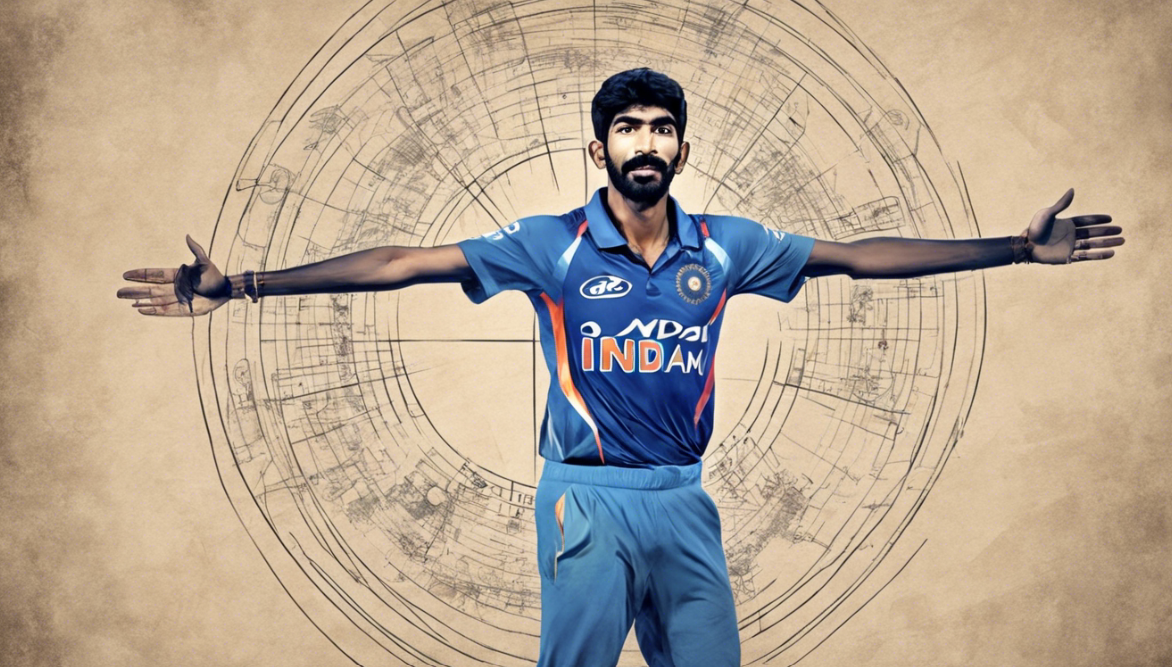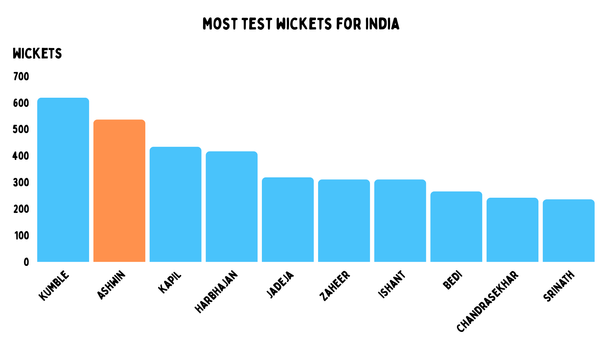What makes Jasprit Bumrah the best bowler in the world?
Is Jasprit Bumrah the most complete fast bowler cricket has produced?

Jonny Bairstow is shocked, and probably confused. It’s almost as if he’s thinking, “How is anyone supposed to play that?”
He’s been there before himself at the Oval in 2021. If anyone knows that sometimes there is nothing you can do when Jasprit Bumrah bowls a yorker, it is Jonny Bairstow.
But yorkers aren’t really a thing in Tests. This is a length-based format. Bumrah brings his best delivery, a rubber and white ball device, and crushes the base of Test stumps with it. He is the limited overs bowler without limits.
Bumrah is not the first great Indian seamer, that’s obviously Kapil Dev. Srinath and Zaheer also had very good careers. But he is not like them - he is a product of the T20 era -and really the entire evolution of fast bowling who can be great at any time, with any colour ball.
Since his return to cricket after a back injury, Jasprit Bumrah has picked up 59 wickets in international cricket at an average of under 16 runs apiece. He had a stellar World Cup and is taking a Test wicket less than every four overs. Calling him the best all-format bowler (or cricketer, really) in the world should not be a hot take.

The question is starting to be how good he is. But it really should be, is he the most complete fast bowler cricket has produced?
Most of the great batters in the world have been done by Bumrah. And that started right at the beginning. In his first IPL match, he dismissed Virat Kohli. In his first ODI and T20I, he got Steve Smith and David Warner respectively. On his Test debut, it was AB de Villiers who had to face his wrath.
That would be a career highlight for many. It’s barely a footnote for Bumrah.
Bumrah has now dismissed Root eight times, Kane Williamson twice and Steve Smith once. He has a combined average of 32.63 in Test cricket against the defining batters of this generation.

But why does he bother the best? Test batters look for prompts from bowlers when they come in to give them an advantage. Bumrah’s action gives them far less. He attributes his action to “copying” many different actions, and the small run-up to playing a lot of tennis ball cricket. And we’ve seen these kinds of stories with tape-ball cricket too - they help the bowlers develop certain unique skills even before they are ready to play at the top level.
All-rounder Ben Cutting talked about how batters never face anything like Bumrah’s action, growing up. Over time you can get used to him, but that needs a long career and surviving him when you first face up. You can see newer players struggling to pick him up, they look like they are batting on delay. He has hyperextended elbows, and also has an unusual release point from a quick arm action.
To explain it in simpler terms, the batters feel the delivery is quicker than it actually is. Time is an important part of batting - what separates the greats from the rest is their ability to not be rushed. People talk about Rohit Sharma or AB de Villiers having that ‘‘extra’ second and a half. Bumrah steals that time. It means he feels like he is around 4-5 KPH quicker than his actual recorded pace.
But this unique action possibly made him more injury-prone. So after Bumrah came back from his injury, an NCA coach talked about how he’s had to make certain adjustments to his action so that he can avoid getting hurt in the future. He says that Bumrah has now increased his run-up by 2-3 more steps and has a bigger follow-through, explaining that it’s because quick bowlers need to have an “increased momentum”.
That is the main driver of what he can do. But it’s a lot more than that.
In 2015, I did this piece on AB de Villiers, calling him the best all-format batter. Not just across formats, but also just the fact that his game was perfectly suited for every kind of cricket. And you have to say that Virat Kohli and David Warner are also right up there when we talk about all-format greats. But to be fair, neither of the three are better Test batters than Steve Smith, who is not a great white ball batter himself.
Ben Jones from CricViz put out this tweet which prompted the question even more. In the last six years, there is an argument that not only is Jasprit Bumrah the best all-format bowler in the world, but he is possibly also the best bowler in the world in every format.
Since the start of 2018, Jasprit Bumrah's rank for:
— Ben Jones (@benjonescricket) February 5, 2024
Test Bowling Average 🥇
CricViz ODI Bowling Impact 🥇
CricViz T20 Bowling Impact🥇
A phenomenon.#INDvENG
He has the best bowling average in Test cricket since his debut. Now, obviously it’s from a small sample size of 34 Tests. He has played 82% of India’s matches outside Asia, and only 25% in the matches on the subcontinent. Some of this is because of his injuries, but he’s also been rested way more frequently at home so that India can get the best out of him when they are on the road. Plus, he probably wasn’t even needed on some of the wickets that India made at home from 2021 to 2023.

Bumrah’s country-wise split is exceptional. He has the best average by an Asian seamer in both Australia and South Africa (though he did bowl on some seam-friendly wickets there) to have bowled in at least 10 innings. In England, he has the best average by an Indian seamer with at least 20 wickets. New Zealand is the only country where he averages over 30, while he has a sub-10 average in the West Indies - both from only 2 Tests each.

This is the record for someone who can swing the ball, seam it and make it bounce at pace. That is a pretty good combo for anyone, most great bowlers can do only two or three. He does them all.
From his record in India, we can tell he’s great at manufacturing wickets without requiring any assistance. Most great Asian seamers almost have to develop this because of playing on flat wickets in both FC and Tests.
Reverse swing is an extremely important skill if you want to be an impactful seamer in Asia. We’ve seen Bumrah use it on multiple occasions. He even says that he learnt that before convention swing, which again tells you how different he is from normal bowlers.
When we have a look at the Asian seamers with the best records there (which Bumrah isn’t on due to only six matches), we can see the all-time greats usually are reverse swing experts. He is definitely that.

But not just that, he is effective throughout the course of Test matches, so he is not heavily dependent on when he has to bowl. His numbers in overs 61-80 are the quite incredible, and that adds up when you think about how good he is at reversing it with the softer ball.

These are just showing you how good he is. But something else does that better. Jasprit Bumrah currently has the second-best bowling average of all time after Syd Barnes. Take a pause.

Sure, he debuted in the peak of the pace-playing pandemic era when the wobble ball was causing havoc and has played on some very result-oriented wickets. But after 34 matches to be only behind Syd Barnes is something special, even if it doesn’t last.
In ODI cricket, Bumrah is one of the rare defensive attacking bowlers. It means that not only are they exceptional at containing the flow of runs, but they also pose a constant wicket-taking threat. Only Rashid Khan has both a better economy and average than him, but it is a bit skewed from playing against some of the weaker batting lineups. Mohammed Shami has a better average, but concedes one run per over more than him.

Bumrah’s numbers more than hold up in every phase - he can swing the ball both ways early on, has variations up his sleeve to get wickets in the middle and keep a lid on the scoring rate, and takes a bunch of wickets without going for too many in the final stages of the innings. He has the best economy rates by a seamer in each phase since his debut.

I have been talking about true economy and strike rates in T20 for a while now. When in the game you bowl and bat matters a lot in limited overs cricket. So Ritwik Mishra did the number crunching for all the IPL seasons before the previous one, and came up with an extensive database. The idea is to provide context instead of just looking at the raw numbers.
From 2013-22, Bumrah has the third-best true economy rate differential among the bowlers to have bowled at least 1000 deliveries. He is only bettered by Sunil Narine and Rashid Khan.

Again, much like most of the players in that list, he has a negative overall mark for true wickets. These guys are so good that teams try to block them out in a 20 over match.

This should be able to explain things better. He is very economical in each phase, but he is an above-par wicket taker only in the middle overs. So while he may not be a strike bowler in the IPL, he is definitely a massive value addition in each phase simply because of his defensive skills.

He’s also had a considerable amount of T20 success for India, being the third-highest wicket taker. Among the bowlers with at least 50 wickets - he has the best average, economy and strike rate for all seamers. Only Kuldeep has a better average and strike rate, and he was dropped when he was struggling.

So, it would not be a stretch to say that Jasprit Bumrah is now in the league of the best Test seamers like Rabada and Cummins (who have a bigger sample sizes), but is also one of the best defensive seamers in every phase of white-ball cricket. Only Bhuvneshwar Kumar in T20 powerplays concedes fewer runs, so he's number one in five out of six phases, and number two in one.
For all of this, a constant narrative about Bumrah among some of the Indian fans that he's a choker. When you have a player who is the prototype of a near-perfect fast-bowler, perhaps people will grasp at anything for flaw.
Can he do it in World Cups?
In the last two 50 over World Cups combined, he has the second-most wickets after Mitch Starc, and the second-best average behind Mohammed Shami. Those are two World Cup giants we are talking about. And he does it at a much better economy rate than them, while bowling in all phases.

But can he do it in an all-important semi-final?
He did bowl well in the 2019 edition, where he took an early wicket. He was the second-most economical bowler for India, and seemed to be a real threat in the powerplay which probably didn’t reflect as well it could have on another day.

In 2023, he dismissed Phillips who could have posed a threat in his partnership with Daryl Mitchell. In fact, he did almost get Williamson too, but the catch was dropped at mid-on.

What about doing it in the final?
Guess what, he took two early wickets and made a billion Indians believe. If anything he failed to take five wickets and win the game on his own.
What about big moments in Tests? If Bumrah failed in the Vizag Test in the fourth innings, he would have been labelled a choker again. Yet, he closed out a tough match away from home against England.
A section of fans also believe that he skips India’s games on purpose to be fit and ready for the Mumbai Indians. Since his debut in international cricket, he has bowled the most overs by any Indian seamer across formats. So you can see the flawed logic here. His body is not great, but it’s what gives him the ability to bowl as he does. You can’t praise the results without understanding that his uniqueness is also more fragile.

Bumrah is something very special, he thinks like a spinner who bowls at 90 MPH. This is him at Lord’s bowling like Ashwin. Coming around the wicket, pitching in line, and using his slower ball skills to spin it back. And he set this up by bowling scary short balls as well.
Tactically as a bowler, but also in the field, he clearly thinks a lot about the game. You can see that he is actively involved in giving suggestions. And he became the first Indian seam bowling captain after Kapil Dev at Edgbaston.
Andy Roberts pointed out his exceptional game sense when India toured the West Indies in 2019. when he was just 11 Tests old. He also compared his ability to adjust lengths to Courtney Walsh. It would make sense a white ball bowler would be this good at changing length, because that is a main skill of those formats.
The West Indian I want to compare him too is Malcolm Marshall. For many he is considered the greatest fast bowler ever. But more importantly, he was accurate, skilful, fast, and used both seam and swing. He mastered all the skills of fast bowling that were available to him at the time outside of reverse swing.
Bumrah uses all of what Marshall had, but adds the white ball skills like great yorkers, slower balls, reverse swing and the wobble ball. Plus, while he isn’t tall, he gets a lot of bounce compared to the shorter West Indian. But while Marshall was arguably the best Test bowler of his period, he was not even the best ODI bowler in his team.

With Bumrah, you could argue he is not only the best bowler in each format of cricket, but also if you look at all the different parts of these games he might also be in the top few as well. He is also one of the best bowlers of each delivery type as well. All formats, all match periods, all balls.
His Test career is still just 34 Tests old, and there are genuine shouts for him being the greatest Indian fast bowler of all time already, and it would be nearly impossible to suggest he isn’t the best all-round bowler of the modern generation.
The real question is how long he can play at this level.
This is a bowler more perfected than any before him when you compare him to others this decade. He’s a vastly better white-ball bowler than Anderson. Way more accurate than Rabada. Kills Cummins in limited overs. Beats Hazlewood all round. Has more tricks than Boult. Can attack and defend unlike Starc and Shami. It isn’t that some of these bowlers aren’t great, it is that they don’t have all his various talents.

Jasprit Bumrah can beat you with pace, accuracy, swing, seam, bounce, thinking, wobbleball, slower ones, yorkers, and 80 MPH offspin. Almost everything a fast bowler could use, he has perfected.
Jasprit Bumrah is the evolution of fast bowling.




